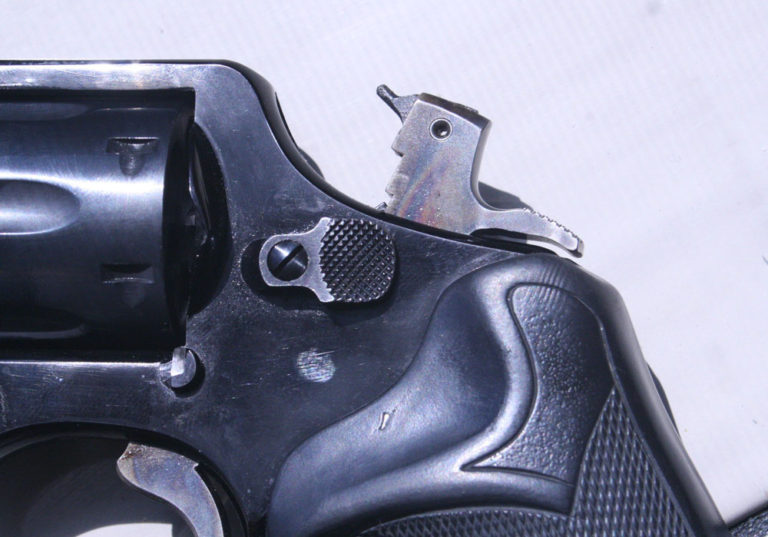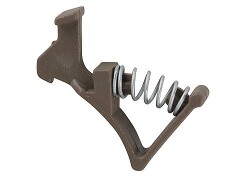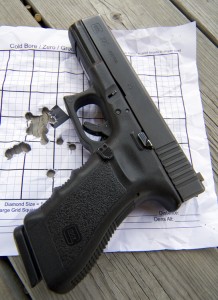

Massad Ayoob on why to avoid the so-called “hair trigger” in concealed carry.

In three and a half decades as an expert witness in weapons and shooting cases, I’ve run across three arguments from the other side which, even though sometimes bogus, are so tough to defeat that it’s better not to have to fight them at all. This goes down hard with the naïve folks who believe “a good shoot is a good shoot,” which is somewhat akin to the belief that every Christmas a fat guy in a red suit is going to come down a chimney and give them presents, too.
First and foremost among these is what a layman would call a “hair trigger,” that is, a trigger pull lighter than what the gun’s manufacturer recommends for a defensive firearm.
It is within the common knowledge that good people forced to fight criminals with guns are likely to be nervous and shaky. We’ve known for well over a century that in the grip of “fight or flight response,” blood flow is directed away from the extremities and into major muscle groups and internal viscera, to “fuel the furnace” for the strenuous effort primal brain believes is about to take place. It’s called vasoconstriction. It’s the reason why frightened Caucasians turn visibly pale, and it’s one reason we all become extremely clumsy under stress. Mixing that with a “hair trigger” is like mixing fire with gasoline.
What, exactly, is a “hair trigger”? It depends on the gun design, just as the question “what is a safe adjustment of brakes” depends on the specific vehicle. The manufacturer’s specification for trigger pull weight on that particular firearm, and the “common custom and practice” for adjusting such guns, constitute the standards.

In the timelessly popular 1911 pistol, the Colt company, which has manufactured more of those guns than any other company, tells its armorers that 4.0 pounds is the red-line bottom limit of pull weight for a duty gun used for police, military, or civilian defense purposes. The National Rifle Association requires a 4.0 pound minimum trigger pull on 1911s used in their Distinguished matches, and enforces it with referees equipped with trigger pull weight measurement devices. Do we see a pattern here?
The most popular pistol in the USA today is the Glock. Since its introduction in this country in the early 1980s, this pistol – issued or approved by over 60% of America’s police at this writing – had a 5.5 pound standard trigger pull. Some departments have gone heavier: Miami and some others went with an 8.0-pound trigger connector.
The New York State Police demanded what is now known as the NY-1 trigger, which gives firm resistance from the beginning of the trigger press and brings total pull weight up to around 8 pounds. NYPD demanded more: first called the New York Plus and now known as the NY-2 module, the trigger system in their Glocks approaches 12 pounds, which for this writer passes the point of diminishing returns. The reason, in all cases, was safety against accidental discharges; with thousands of cops using guns under stress, the firearms instructors on those departments wanted a greater safety buffer.
In the late 1980s, Glock came out with a target model sporting a 3.5-pound connector; weighed from the bottom tip of the trigger, that was the pull weight, and leverage being what it is, it ran about 4.5 pounds from the center of the pivoting trigger; they later renamed the exact same part the 4.5-pound connector. However, from the beginning of all that, it was adamant Glock policy that this trigger pull weight not be used in a duty or defense gun.

Their models with this light trigger, then and now, are listed in their catalogs and websites under “sport,” not “duty” or “self-defense” pistols. Target models ordered by police departments are, by policy, shipped with 5.5-pound or heavier trigger pulls.
Would installing a lighter trigger in a duty Glock be a problem? Look up the case of Santibanes v. Tomball, TX and see for yourself. The short answer is, “Yes.”
Before the Glock, revolvers were standard in American law enforcement. Cocked revolvers with light single-action pulls proved conducive to unintended discharges. Decades ago, LAPD set the trend of converting the guns to double action only. Could, say, a cocked Colt Detective Special with 4.5-pound pull be seen as “reckless and negligent” for taking a criminal at gunpoint? Look up the Appellate Court decision in New York v. Frank Magliato, and find out for yourself that the answer is yes.
Why would 4.5 pounds be seen as negligent in a cocked revolver or a Glock, but OK for a 1911? Partly because the 1911 has a passive grip safety and an active manual thumb safety the other two guns don’t have, and partly because their own factory literature, court-discoverable, said so.
My own practical advice would be to stay above 4 pounds in a 1911 and 5.5 pounds in a Glock, and render a defensive revolver double action only, an easy gunsmith job.
Why is it an issue at all in an intentional self-defense shooting? Because the hair trigger gives opposing counsel a hook upon which to hang a false allegation, whether criminal or civil. In the criminal case, it’s easier to sell a jury on a theory that the gun went off by accident due to a negligently too-light trigger pull, sustaining a manslaughter charge, than to convince them that a good person turned into Mr. Hyde and became a murdering monster. In a civil lawsuit, the motivation is different: plaintiff’s counsel is looking for deep pockets.
Few defendants have a million liquid, unprotected dollars that the plaintiff can seize to satisfy the judgment if the jury decides in the civil case that you deliberately, maliciously killed the deceased.
But most people HAVE a million dollar homeowner liability insurance policy if a burglar was shot, or the same for automobile liability if a carjacker was shot, and the insurance company has the money! However, the vast majority of insurance policies won’t pay off on an intentional tort, a deliberate act that harmed the plaintiff. But they will pay off for a negligent accident. Voila, the theory of “he shot my client by accident when he negligently pointed a hair-trigger gun at him” is born.

Next Step: Get your FREE Printable Target Pack
Enhance your shooting precision with our 62 MOA Targets, perfect for rifles and handguns. Crafted in collaboration with Storm Tactical for accuracy and versatility.
Subscribe to the Gun Digest email newsletter and get your downloadable target pack sent straight to your inbox. Stay updated with the latest firearms info in the industry.

![Best Concealed Carry Guns In 2025 [Field Tested] Wilson Combat EDC X9S 1](https://gundigest.com/wp-content/uploads/Wilson-Combat-EDC-X9S-1-324x160.jpg)


![Best 9mm Carbine: Affordable PCCs [Tested] Ruger Carbine Shooting](https://gundigest.com/wp-content/uploads/Ruger-Carbine-Shooting-100x70.jpg)
![Best AR-15: Top Options Available Today [Field Tested] Harrington and Richardson PSA XM177E2 feature](https://gundigest.com/wp-content/uploads/Harrington-and-Richardson-PSA-XM177E2-feature-100x70.jpg)
